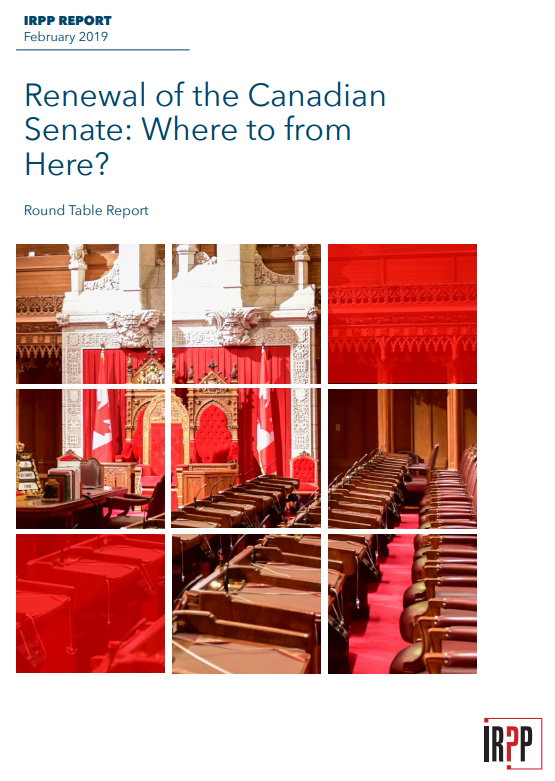Renewal of the Canadian Senate: Where to from Here?
 In November 2015, the government led by Justin Trudeau announced a new, nonpartisan process to select candidates for Senate appointments. Most of the senators appointed since March 2016 under the new process have joined the Independent Senators Group, and by mid-2018 the group held almost half the Senate’s seats. To take stock of these developments and related internal changes, the Institute for Research on Public Policy convened a round table in Ottawa on September 27, 2018 attended by Senator Ratna Omidvar. This report summarizes the presentations and discussion at that event.
In November 2015, the government led by Justin Trudeau announced a new, nonpartisan process to select candidates for Senate appointments. Most of the senators appointed since March 2016 under the new process have joined the Independent Senators Group, and by mid-2018 the group held almost half the Senate’s seats. To take stock of these developments and related internal changes, the Institute for Research on Public Policy convened a round table in Ottawa on September 27, 2018 attended by Senator Ratna Omidvar. This report summarizes the presentations and discussion at that event.
According to participants’ comments, there was general support for the claim that the Senate is performing its legislative review function even more effectively than in the past. This is reflected in more sustained interaction with the House of Commons, ministers and senior departmental officials. Some concerns were expressed about the large increase since 2015 in the number of registered communications between lobbyists and senators. It was observed that despite proposing more amendments to government bills than previously, the renewed Senate is generally respecting the principle of deference to the House of Commons. Participants commented favourably on the degree to which recent Senate appointments have reflected Canada’s diversity, but they were less certain that regional representation has improved. There was a general sense that while the current renewal of the Senate represents progress, further changes are needed — particularly to reflect the move toward a second chamber organized much less along party lines than in the past. However, no one called for a return to intergovernmental negotiations on constitutional reform of the Senate.
Read the full report on IRPP’s website.